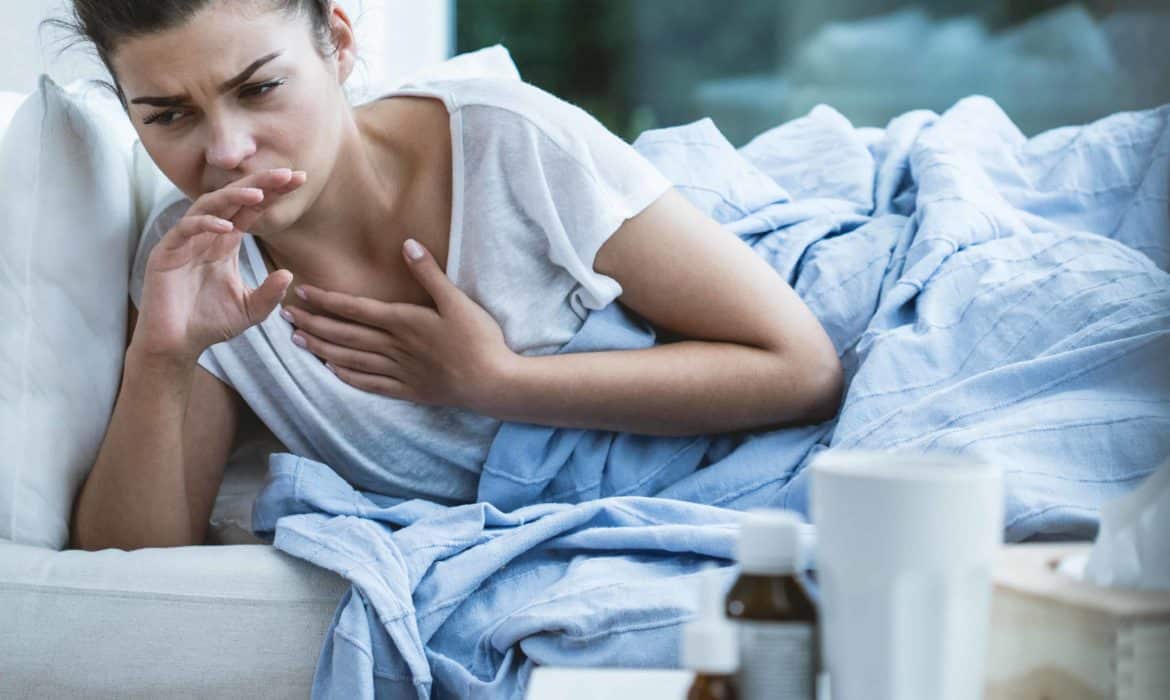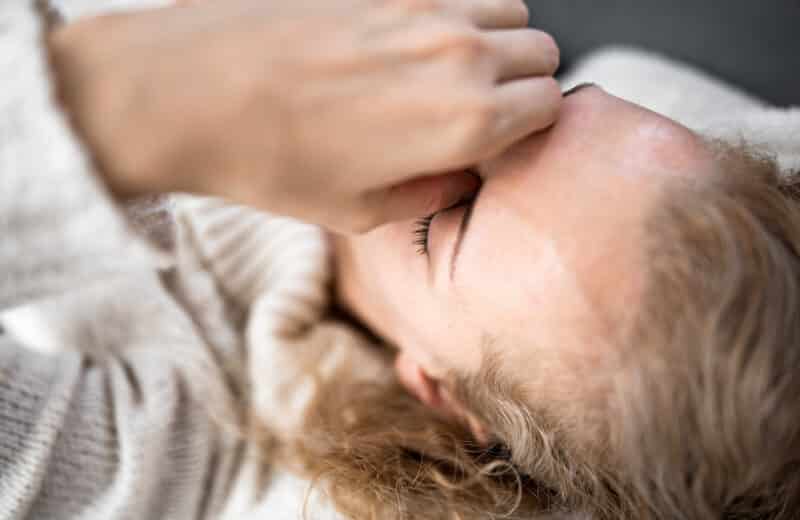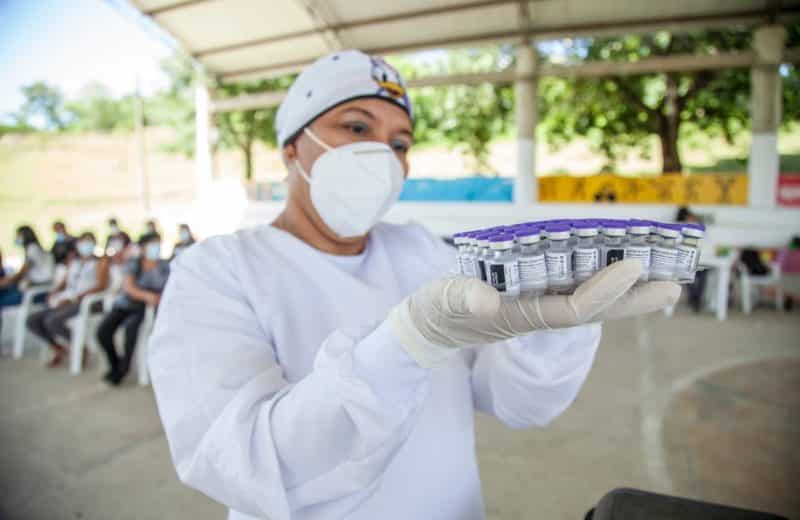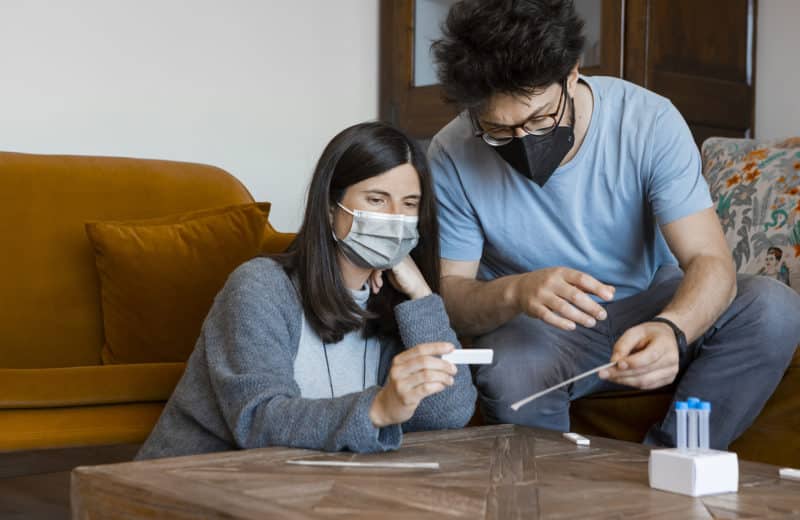The chills started on a Friday in March, along with a fever — four days after Jerry and Colleen Rzepka flew back to Chicago from Orlando, Florida. With Jerry too exhausted to move any more than absolutely necessary, the retired couple stayed inside their Naperville home all weekend.
Jerry took the back bedroom in their 800-square-foot apartment, while Colleen slept on the couch. They didn’t touch, and Colleen washed their towels daily. The potential was high that they were up against coronavirus, especially after having traveled. And Colleen, a retired nurse, knew that isolating Jerry was the best way to keep the infection from spreading. She also worried about herself, especially because she’s 67 years old with type 2 diabetes.
Because more and more people are self-quarantining — directed to stay out of overloaded hospitals — an increasing number of people are having to take care of a sick person in their home, without knowing how to best do so.
Preventing the spread
Colleen felt fine as she and Jerry drove across town to a drive-thru testing site the following Monday. But the next day, she developed a high fever and felt weak with body aches. “It felt like the flu but with a chronic cough,” she says.
Jerry’s phone rang at 10 p.m. that evening: He’d tested positive for COVID-19.
“We weren’t surprised because he felt like crap and had a fever,” Colleen says, over a series of coughs. But she has no plans to get tested. “I for sure have it. There’s no reason to expose those staff members.”
Taking care of someone with COVID-19 starts with hyper-vigilant infection control, says pulmonary advanced practice nurse Marilyn Borkgren, APRN, who works with AMITA’s pulmonary critical care group in Elk Grove Village.
“Practice the best reasonable, vigilant infection-control measures possible within the home setting,” she says. “Preventing spread is critical.” People with symptoms should not share a bedroom or bathroom, if possible. They shouldn’t share meals or utensils. If sick with COVID-19, they should isolate from others in the household, including pets, according to the Centers for Disease Control and Prevention (CDC).
Borkgren recommends that helpers keep encounters “very brief” with no physical touching. If you’re delivering food or medication, leave it at the door and step away. “It’s duration and proximity. That will minimize exposure,” she says. She recommends keeping more than 6 to 10 feet apart, as small infectious particles can travel farther than 6 feet, and limiting duration to less than 5 to 10 minutes.
Clean all high-touch surfaces daily — like counters, doorknobs, tabletops and keyboards —with a disinfecting surface cleaner. If the infectious person touches a surface in a shared living area, clean that surface as soon as possible. Vinegar and water are not effective, Borkgren notes.
If you’re handling the person’s laundry, wear gloves if possible, Borkgren says. Don’t hold the clothes to your body, and when you’re done, take the gloves off, wash your hands and clean the laundry basket.
The person needing care should wash their hands regularly and thoroughly. And they should wear a surgical mask when they’re out of their room, to avoid spreading the virus to other people in the home.
Self-isolation struggles
Sarah Percy and her husband Bill (who asked that their names be changed for privacy) live on Chicago’s South Side with their two children. They have experienced firsthand the struggles of self-isolation for families.
When Bill started showing coronavirus symptoms — fever, dry cough, shortness of breath, body aches and chills — the couple agreed that he should isolate in their spare bedroom, to avoid exposing the family. Because Bill is an emergency first-responder, Sarah suspected COVID-19 immediately. “He’s out in the world interacting with humans on a regular basis,” she says. “It felt inevitable to me.”
Bill stayed in the spare bedroom. If he stepped outside the bedroom, he wore a mask and carried disinfecting wipes to wipe down any door handles or surfaces he touched before returning to the bedroom.
“He had almost no contact with us,” says Sarah, who was suddenly solo-parenting a toddler and a newborn. But two days after Bill’s symptoms started, Sarah’s kicked in, too — body aches, chills, dry cough and a headache.
“Once I got sick, it was in the house, and we were all exposed. We can’t both quarantine from the kids,” she says. “We’re washing our hands a million times a day. You can’t social distance from a baby and a 3-year-old.”
It’s been hard to not receive support or medical help, Sarah says. “Doctors don’t want to see you, so there was a video appointment with my husband’s doctor,” she says. “We can’t ask anybody to help out with the kids because we can’t risk exposing them to us.”
Another aspect of care, which is particularly challenging when everyone in the home is sick, is what Borkgren calls “support care.” This type of care involves making sure the sick person is drinking plenty of fluids, resting, eating if possible and taking medications for symptoms such as cough or fever.
In Naperville, Colleen and Jerry take Tylenol for their fevers and try to drink fluids every 15 minutes. They sleep all night but still wake up tired. “We take our showers every day, but we don’t even have the concentration to watch a show,” Colleen says.
And they both have another common COVID-19 symptom: loss of taste. “Even water tastes odd, and I love water. That’s my main liquid,” Colleen says. “Usually I like to cook and food prep, but now I have no interest in doing it. It’s a pain in the butt. We’ve both lost 6, 7, 8 pounds.”
When symptoms become serious
Nights can often feel the most daunting, when insomnia and worry seep in, and when symptoms worsen. Borkgren recommends being as prepared as possible by having contact information for healthcare providers readily available.
Think about who you’ll call if the person takes a turn for the worse. Who is their primary care doctor or pulmonologist? What’s the best phone number to reach them?
Melody Dewar is a home care provider with Right at Home North Suburban Chicago, based in Lincolnshire. The home care agency is continuing to operate during the current stay-at-home order, and owner Matt Field says administration is keeping in constant contact with caregivers, nurses and clients to maintain best infection control practices.
The caregiver should stand a safe distance away, says Dewar, who has cared for individuals with respiratory disorders like chronic obstructive pulmonary disease and pneumonia. “Just do the best you can, and if it really gets too out of hand, call for help. Seek someone else’s advice.”
Symptoms can wax and wane, Borkgren says. For most people, symptoms will be mild and last up to 10 to 14 days. But for people who experience moderate symptoms, COVID-19 may linger for three to six weeks. And for people who require critical care, the course to recovery may last months, at least, Borkgren says.
For Colleen and Jerry, that meant fevers going away and then coming back after several days. “I keep telling people I think we’re better, but then we’ve got fevers,” Colleen says. “It’s a long, long process. We’re hoping we’ll have some immunity developed after this.”
If symptoms worsen, call a healthcare provider or, in cases of severe distress, go to the hospital’s emergency department, Borkgren says. Watch for rapid breathing, shallow breathing, painful breathing or shortness of breath during simple activities, such as showering or walking from one room to another. “Those are patients who need to get to the hospital,” she says. “They can get very sick very fast and may require oxygen or intubation for mechanical ventilator support.”
Also be on the lookout for confusion, trouble waking the person or changes to their skin or lip color to a pale blue or gray. This can indicate that the blood isn’t getting enough oxygen to their brain and body.
“We’re not short of breath at all, so I’m glad,” Colleen says. “The last thing I want to do is be near a hospital.”
Most people feel that way now, but they need to seek medical attention if they have difficulty breathing, particularly if they’re elderly or at high risk from medical complications or underlying autoimmune diseases, Borkgren says, although anyone at any age can become severely ill from COVID-19.
A return to normal
Even though being sick feels like it will last forever, it won’t. A person can end isolation if they’ve tested negative for coronavirus twice, 24 hours apart, although that option isn’t readily available due to testing limitations. Also, individuals are generally considered to be in the clear if it’s been at least seven to 14 days after their symptoms started, they’ve had no fever for at least 72 hours (without taking fever-reducing medications) and other symptoms have improved.
“Some patients have mild symptoms for a week or longer, but then they may take a rather sudden turn for the worse and become critically ill. You want to watch for emergency signs until they’re really well,” Borkgren cautions. After that, freedom awaits.
“It is important to remember the illness will not last forever. To the affected person and caregiver, the confinement may seem like an eternity, but it’s not. In the overall scheme of household and community health, [quarantining] is the right thing to do — a relatively short period of time in the larger scheme of our lives together,” Borkgren says.
In caring for people, Dewar adds, “I just do the best I can. There’s always light at the end of the tunnel. Things will get better.” And even though the situation is serious, remember that smiling and laughter help ease pain, too. “If I can try to put a smile on your face, take that two minutes to make you happy and get your mind off of something that’s bothering you, it’s worth it.”
Colleen and Jerry have learned exactly that. “We’re just riding it out. That’s all you can do,”













